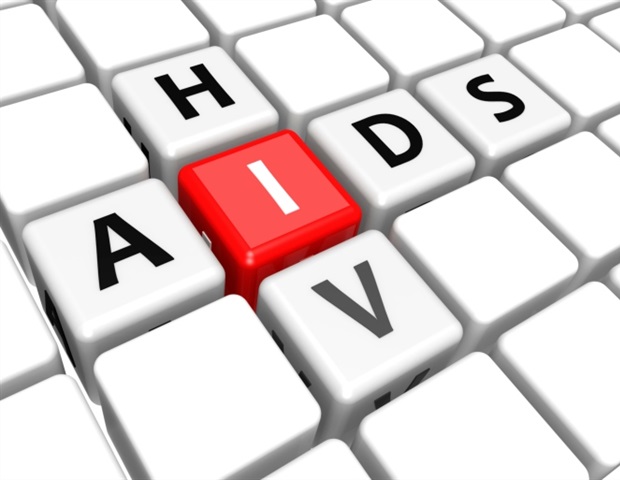Global HIV/AIDS fight at a Crossroads: Funding Cuts Threaten Decades of Progress
experts warn that proposed reductions in international HIV/AIDS funding could trigger a resurgence of the epidemic, potentially reversing years of hard-won gains.
By Archyde news
Looming Crisis: A Perfect Storm of Funding Cuts
Global health officials are sounding the alarm about a potential resurgence of the HIV/AIDS epidemic. Experts fear that proposed cuts to international funding, coupled with existing pressures on healthcare systems, could lead to a dramatic increase in new infections and deaths, potentially erasing decades of progress. The situation is particularly dire in Sub-Saharan Africa, but the implications are global, including for the United States.
The concerns stem from proposed reductions in foreign aid from major donor nations. Historically, the U.S. has been the largest contributor to the global HIV response, primarily through the President’s Emergency plan for AIDS Relief (PEPFAR). Though, recent reports indicate potential cuts to PEPFAR, raising serious concerns about the future of HIV prevention and treatment programs worldwide.
Adding to the worries, other major international donors, including the United Kingdom, France, Germany, and the Netherlands, which collectively with the U.S. account for over 90% of international aid, have also announced plans for important cuts to foreign aid. Researchers estimate that these combined cuts could result in a 24% reduction in global international HIV funding by 2026.
the US Role: A Legacy of Leadership at Risk
Since its inception in 2003, PEPFAR has been a cornerstone of the global fight against HIV/AIDS, investing over $100 billion. The program has been credited with saving millions of lives and dramatically reducing the spread of the virus. A prime example is botswana, where PEPFAR has helped achieve near-universal access to antiretroviral therapy, leading to a significant decline in HIV-related deaths.
Recent reports, though, suggest that proposed budget cuts at the Centers for Disease Control and Prevention (CDC) could impact PEPFAR. According to a report by KFF, “Cutting HIV Prevention funding at CDC: What Would it Mean? On March 18th, reports began to emerge that the Trump administration is exploring cuts to the centers for Disease Control and Prevention (CDC), including in the HIV prevention budget. CDC is the…” While the immediate impact of these cuts is still unfolding,experts fear that they could undermine the effectiveness of PEPFAR and jeopardize the progress made in recent years.
These cuts not only affect international efforts but also have domestic implications. The CDC plays a vital role in HIV prevention and treatment within the U.S., particularly among vulnerable populations. Reduced funding could lead to a rise in new infections and exacerbate existing inequalities in access to care.
Expert Voices: dire Warnings and Calls to Action
The potential consequences of these funding cuts are severe,according to leading experts in the field. Debra ten Brink of the Burnet Institute,Australia,co-lead author of a study on the impact of funding cuts,warns that “Looking ahead,if other donor countries reduce funding,decades of progress to treat and prevent HIV could be unravelled.”
The executive director of UNAIDS, Winnie Byanyima, echoed these concerns in March, stating, “We will see a … real surge in this disease. [We] will see it come back and we [will] see people dying the way we saw them in the 90s and in 2000s.”
Byanyima also predicted an additional 8.7 million new infections, a stark contrast to the 1.3 million new infections globally in 2023.
The Numbers Don’t Lie: Modeling the Impact
A study published in The Lancet HIV used a mathematical model to estimate the potential impact of international aid reductions in 26 countries. The model simulated the effects of an immediate end to PEPFAR support in countries heavily reliant on foreign aid for HIV programs. The findings were alarming.
The study projected a 1.3- to six-fold increase in new infections among high-risk populations compared to scenarios where funding levels remained stable. The hardest-hit regions would likely be Sub-Saharan Africa and vulnerable groups such as people who inject drugs, sex workers, men who have sex with men, and children. It’s crucial to note that mathematical models are based on assumptions and data available at the time of the study, and the actual impact could vary.
A Multi-Pronged Approach: Innovation and Sustainability are key
Recognizing the severity of the situation, experts are advocating for a multi-pronged approach to mitigate the impact of funding cuts and ensure the long-term sustainability of HIV programs. this includes integrating HIV care with other primary healthcare services to improve efficiency and leverage shared resources. As Rowan martin-Hughes, a senior researcher at the Burnet Institute and co-author of the study, notes, “Integrating HIV care with other primary healthcare services may improve efficiency and leverage shared resources.”
One successful example of this approach is in Vietnam,where integration,coupled with health insurance coverage for HIV services,centralized antiretroviral therapy procurement,and mobilization of domestic resources,has substantially increased domestic financing of the HIV response. As a result,domestic financing rose from 32% in 2013 to 52% in 2022.
Martin-Hughes suggests exploring additional domestic funding streams, such as “Introducing a modest HIV-specific tax levy or incorporating HIV services into a broader health insurance mechanism.” He points out that similar measures have been successfully implemented in some Sub-Saharan African countries.
Integration is Key: Lessons from Vietnam and Africa
The integration of HIV services into existing healthcare systems is crucial for long-term sustainability. In many countries, HIV programs have operated separately, relying heavily on international funding. However, as Martin-Hughes explains, “In many countries, HIV services have existed separately from the rest of the government-funded health system, because of the international focus on the disease… These are the countries that are being most acutely affected by the immediate pausing of that aid.”
By integrating HIV care into the broader healthcare system, countries can reduce their reliance on external funding and strengthen their overall health infrastructure. This approach not only ensures the continuity of HIV services but also improves access to care for other health conditions.
Beyond Funding: Addressing Systemic Challenges
Addressing the HIV/AIDS epidemic requires more than just funding. It also necessitates tackling systemic challenges such as poverty, discrimination, and lack of access to education. These factors contribute to the spread of the virus and hinder efforts to prevent new infections.
In the U.S., for example, HIV disproportionately affects marginalized communities, including racial and ethnic minorities, LGBTQ+ individuals, and people living in poverty. Addressing these social determinants of health is essential for achieving health equity and ending the HIV/AIDS epidemic.
A call for Global Solidarity
The fight against HIV/AIDS is a global challenge that requires international cooperation and solidarity. Wealthier nations have a obligation to support low- and middle-income countries in their efforts to prevent and treat the virus.This includes maintaining funding for essential programs like PEPFAR and investing in research and development of new prevention and treatment strategies.
Angela Muvumba Sellström,senior researcher at the Nordic Africa Institute,emphasizes the credibility of these warnings,stating that the short-term result of the withdrawal of this much aid will be an increased disease burden on weak health infrastructure,especially in Africa.
she further challenges international large-scale financing actors like the African Development Bank, World Bank and the IMF to commit more to financing for health and ease the debt burden by rescheduling payment for some African governments.
The Path Forward: Innovation, Collaboration, and Commitment
Despite the challenges, there is still hope for ending the HIV/AIDS epidemic. With continued innovation,collaboration,and commitment,the world can achieve the goal of a future free from HIV.This requires a multi-faceted approach that includes:
- Sustained funding for HIV prevention and treatment programs
- Integration of HIV services into existing healthcare systems
- Addressing social determinants of health
- Investing in research and development
- Promoting human rights and reducing stigma and discrimination
By working together, the global community can overcome the challenges posed by funding cuts and continue making progress towards ending the HIV/AIDS epidemic. The stakes are high, and the time to act is now.






